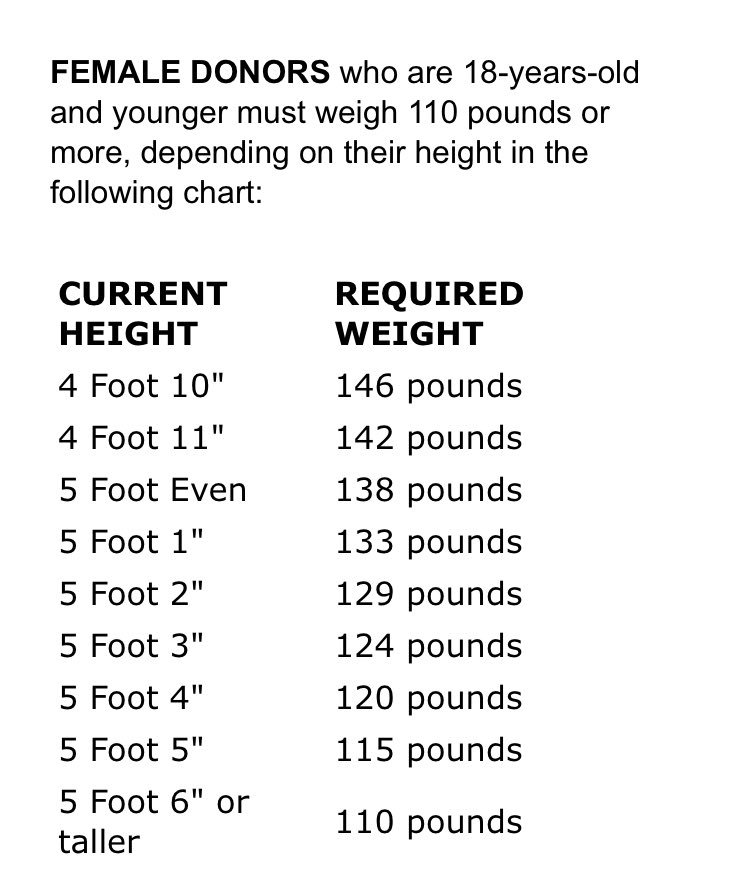
If you are 4 feet and 11 inches, you must weigh at least 114 pounds. Height and weight also factor into whether you can donate blood or not.įor male donors, if you are taller than 5-feet, you must weigh at least 110 pounds. You must be at least 18 years old to donate blood, according to the Red Cross. How old do you have to be to donate blood? What is the most common blood type? Here's which of the eight is most (and least) common.

You must wait 28 days between each donation. Before making your next platelet donation, you must wait seven days or one week.įor plasma donations, you can donate up to 13 times a year. Platelet donations can be made up to 24 times a year. You must wait 16 weeks, or 112 days, between Power Red donations. You can make Power Red donations up to three times a year.

You must wait eight weeks, or 56 days, before you next whole blood donation. You can make whole blood donations up to six times a year, according to the Red Cross. The amount of times you can donate blood depends on the type of blood donation. Just Curious? Your everyday questions, answered How often can you donate blood? What is the rarest blood type? Here is the least common of the eight blood types AB plasma is used in emergency and trauma situations, according to the Red Cross. Ideal blood types for this donation are AB positive and AB negative. During this donation, plasma is separated from other parts of your blood, and your red blood cells and platelets are given back. Plasma donations take your plasma, which is the liquid portion of blood often used in emergencies. Ideal blood types for this donation are A positive, A negative, B positive, O positive, AB positive and AB negative. Platelet donations are used for cancer treatments and organ transplants, as well as other surgeries, according to the Red Cross. During this type of donation, platelets are taken from your blood, along with some plasma, while your red blood cells and remaining plasma are given back.

Platelet donations collect your platelets, which are cells in your blood that form clots and stop bleeding. Ideal blood types for this donation are O positive, O negative, A negative and B negative. The red blood cells are typically given to " trauma patients, newborns and emergency transfusions during birth, people with sickle cell anemia, and anyone suffering blood loss," according to the Red Cross. Anyone regardless of blood type is encouraged to give whole blood donations.Ī Power Red donation takes your red blood cells and gives back your plasma and platelets.

Types of blood donationsĪ whole blood donation can be used in its complete form but can also be separated into " its specific components of red cells, plasma and platelets," according to the Red Cross. Whole blood donations are often used for trauma patients and those undergoing surgery. How often you can donate blood, how long it takes to donate and more may depend on which type of blood donation you give.īefore you go in for your next appointment, here is what you need to know about blood donations and answers to some frequently asked questions. There are several types of blood donations: whole blood, Power Red, platelet and plasma donations, according to the American Red Cross. As a result, there are different processes for donating blood.


 0 kommentar(er)
0 kommentar(er)
